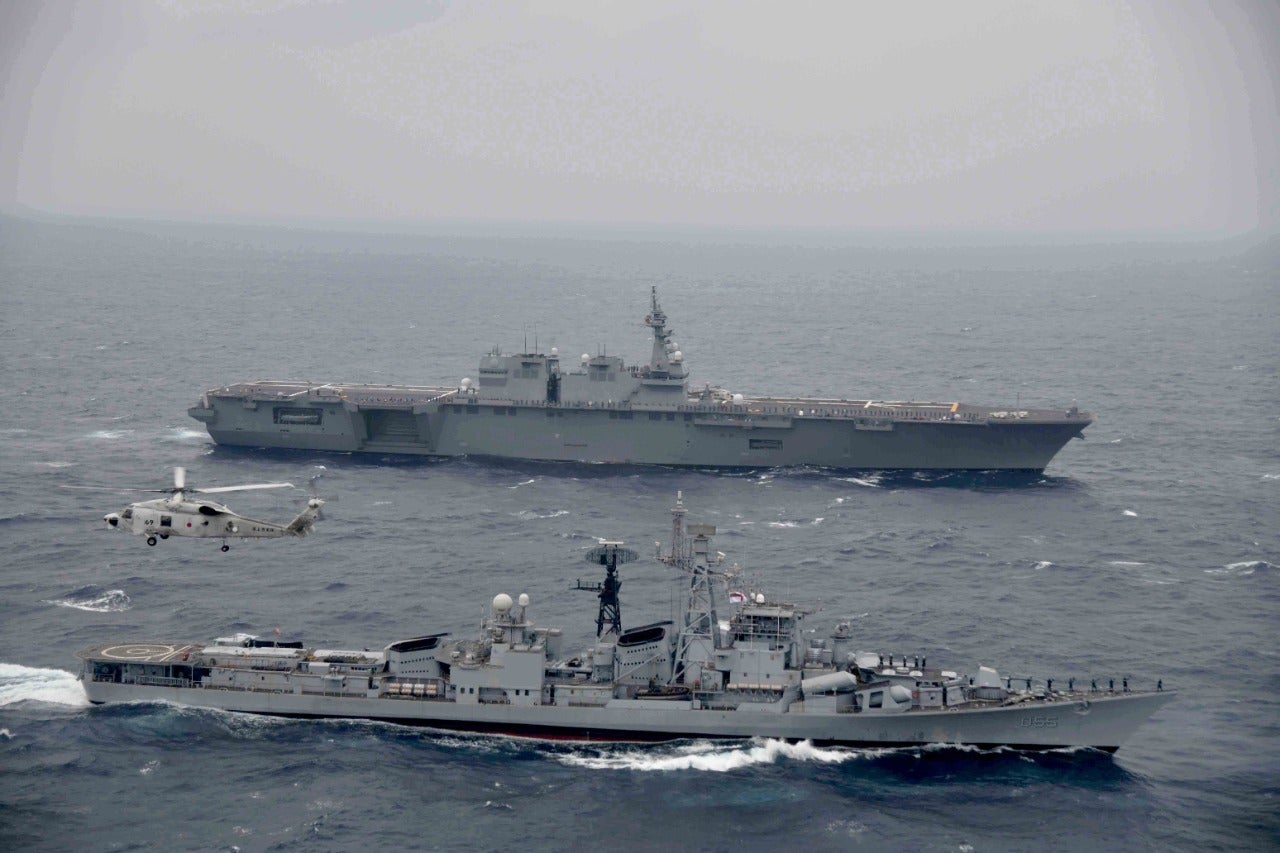
Naval forces of Japan and India have concluded the week-long bilateral maritime drill, Japan India Maritime Exercise (JIMEX) 2022.
Conclusion of the exercise was marked by a customary steam past in the Bay of Bengal on 17 September.
Hosted by the Indian Navy, the sixth iteration of JIMEX commenced on 11 September and involved two different phases, including at sea and a harbour phase, conducted in Visakhapatnam, India.
Marking 70 years of establishing diplomatic relations between India and Japan, this year’s bilateral effort was the tenth anniversary of JIMEX, which began in 2012.
The Japan Maritime Self Defence Force’s (JMSDF) Izumo-class multi-purpose helicopter carrier, JS Izumo, and Takanami-class destroyer, JS Takanami, participated in the exercise.
Meanwhile, Indian Navy’s assets included three indigenous warships, including a Shivalik-class multi-purpose stealth frigate Sahyadri and two anti-submarine warfare (ASW) corvettes Kadmatt and Kavaratti.
Furthermore, the Indian Navy’s fleet tanker Jyoti, offshore patrol vessel Sukanya, guided missile destroyer Ranvijay, MIG 29K fighter aircraft, ship borne helicopters, long-range maritime patrol aircraft along with submarines, also took part in JIMEX 22.
The Indian Naval ships were led by Eastern Fleet commanding flag officer rear admiral Sanjay Bhalla, while the JMSDF vessels were led by Escort Flotilla Four commander rear admiral Hirata Toshiyuki.
As part of JIMEX 22, the JMSDF and the Indian Navy collectively undertook a series of complex drills, including advanced level ASW, weapon firings as well as air defence exercises.
The forces also carried out replenishment at sea, as part of the Reciprocal Provision for Supply and Services pact between the two nations.
According to JMSDF, the exercise allowed forces to enhance their tactical capabilities and strengthen interoperability with each other.


